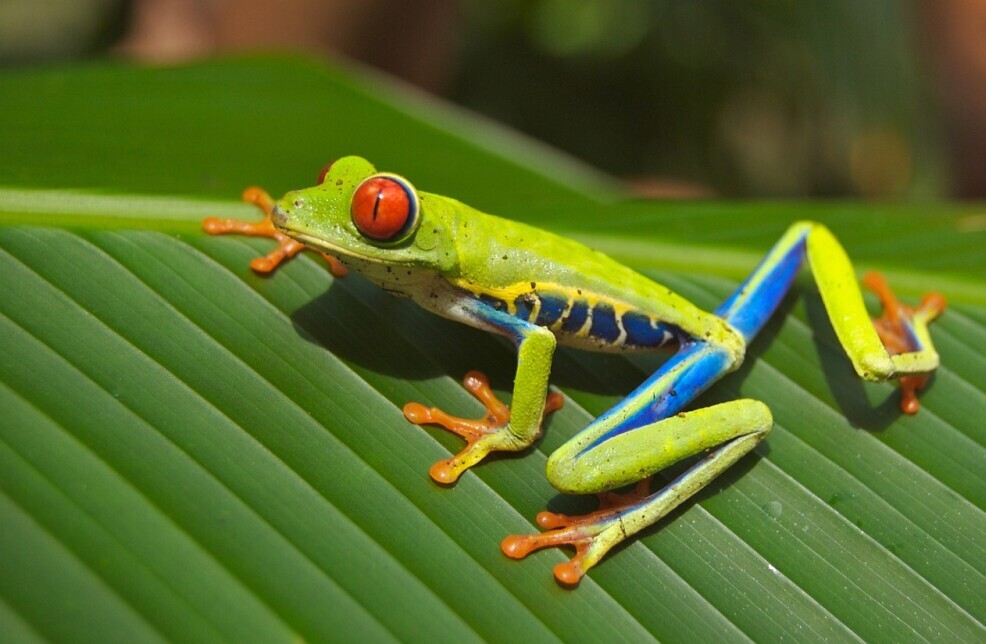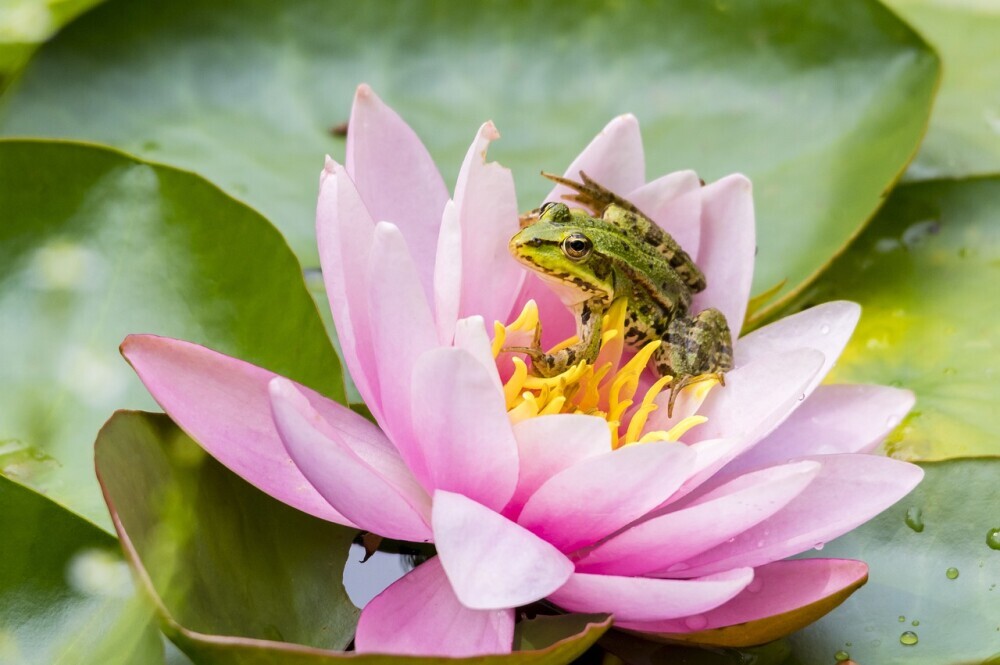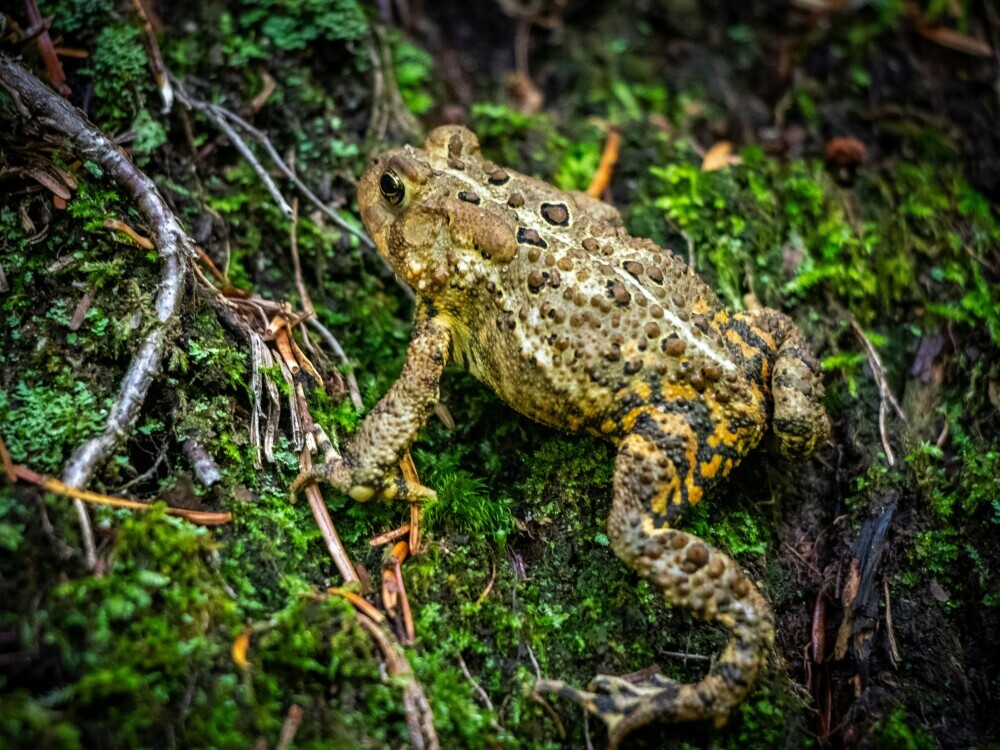Amphibians are in trouble, and it’s happening right under our noses. Around the world, these vital creatures are disappearing at an alarming rate. A staggering number of amphibian species are on the brink, and if nothing changes, many could vanish forever. But why are these little critters so important and what’s causing their numbers to plummet?

The numbers paint a pretty grim picture. Scientists estimate that about one-third of all amphibian species are threatened with extinction. That translates to hundreds of unique species, each playing a critical role in their ecosystems, now facing dire straits. Amphibians, often dubbed the ‘canaries in the coal mine’, can indicate environmental health, so their decline is telling us something’s seriously wrong.
Habitat loss leads the charge in this crisis. From rainforests being cleared to wetlands drained for agriculture or urban development, amphibians are losing their homes left and right. Pollution also plays nasty tricks on these sensitive animals. From pesticides in agriculture to industrial waste, pollutants can deform and devastate amphibian populations.
Climate change only adds fuel to the fire. These cold-blooded animals rely on specific habitats to regulate their body temperatures. Rising global temperatures and unpredictable weather patterns can disrupt breeding cycles and habitat conditions, pushing some species to the edge.
And let’s not forget chytridiomycosis, a deadly fungus that affects amphibians worldwide. This infectious disease has wiped out entire populations, and with limited solutions, it’s a race against time to protect the remaining amphibians.
Amphibians play a key role in our ecosystems. They control pest populations, ensuring that agricultural crops aren’t overrun by insects, and their tadpoles help keep water bodies clean by filtering out algae. Their presence or absence affects everything around them, including human life.
This crisis is complex, but awareness is the first step towards change. Knowing the problem’s depth equips us with the urgency needed to act or support others who can. It’s not just about saving frogs and salamanders; it’s about preserving the intricate web of life that supports us all.

Cutting-edge Genetic Research: Preserving Our Biodiversity
Genetic research is breaking new ground in amphibian conservation. Innovative techniques are emerging as powerful tools to help save amphibian species teetering on the brink.
CRISPR and other genetic editing technologies have opened doors previously thought impossible. Imagine being able to engineer disease resistance or restore genetic diversity in populations threatened by inbreeding. These advances bring hope for endangered amphibians.
Look at some success stories. In some cases, gene editing has reintroduced lost traits, boosting the survival rates of amphibians in the wild. These instances are beacons for what could be accomplished with more research and deployment of these technologies.
Ethical questions abound, though. Is it right to alter the DNA of wild animals? Where should the line be drawn between natural selection and human intervention? These are tough questions with no easy answers, but they are crucial in shaping the future of biodiversity conservation.
It’s not just about science; it’s about collaboration. Genetic research is best when conservationists, geneticists, and ecologists work hand in hand. By pooling knowledge, we ensure that interventions are effective, ethical, and sustainable.
As promising as genetic research is, there are risks too. Unintended consequences of genetic modifications could affect not just target species but entire ecosystems. It’s a fine balance, requiring careful consideration and ongoing research.
Finding the funds and support for these high-tech solutions is another hurdle. But with government bodies, NGOs, and private sectors starting to recognize the significance of genetic interventions, the future looks brighter for amphibian conservation.

The Power of Technology: Monitoring and Reporting Innovations
In the quest to safeguard amphibians, technology is our ally. We’re seeing futuristic tools reshape how we track and understand these vulnerable creatures. From AI to drones, tech is giving us unprecedented insights into the lives of amphibians.
Drones are now buzzing over forests and wetlands, recording high-definition footage that helps scientists track amphibian populations and identify critical habitats. There’s no more need to trek through the mud (unless you want to), as these flying eyes in the sky do the heavy lifting.
Artificial Intelligence is enhancing our ability to process massive amounts of data quickly and accurately. Machine learning algorithms can identify frogs’ croaks and call patterns, even amidst a noisy environment, helping scientists understand behavioral changes and population dynamics.
Citizen science is booming thanks to mobile apps. These handy tools empower everyday folks to contribute to amphibian conservation right from their phones. By snapping pictures of amphibians and noting locations, citizens help build a robust database that scientists can tap into for real-time research.
Remote sensing technology is another game-changer. It allows us to assess habitat quality without disturbing the environment. Through satellite imagery, we can monitor changes over wide areas, picking up on environmental shifts that might affect amphibians.
Data collected from all these tech sources feeds into complex analytics systems. Making sense of this ‘big data’ is challenging but crucial. The patterns and insights gathered help direct conservation efforts and policy decisions, making them more targeted and effective.
While the benefits are clear, the journey isn’t without hurdles. Implementing these technologies, especially in remote and resource-limited areas, can be tough. There’s also the question of data privacy and ethical use that needs addressing. Despite these challenges, technology’s potential in amphibian conservation is vast and holds great promise for the future.
Community Engagement and Indigenous Knowledge: Local Boots on the Ground
Community involvement is a powerhouse in amphibian conservation. Local communities are stepping up, turning the tide on amphibian decline through inspiring grassroots efforts.
Indigenous peoples have been guardians of the land long before conservation became a buzzword. Their traditional knowledge, honed over generations, offers invaluable insights into sustaining biodiversity. By blending this ancient wisdom with modern practices, conservation strategies become richer and more effective.
Take community-led conservation projects. These initiatives tailor solutions to local needs and conditions, increasing their chance of success. In some areas, local groups have already made significant strides in habitat restoration and protection, serving as models for others to follow.
Education plays a crucial role here. Outreach programs demystify conservation, showing why it’s worth protecting amphibians. By sparking curiosity and understanding, these programs create ambassadors for change among young and old alike.
Another exciting development is the rise of citizen scientists. Everyday folks are collecting data, sharing observations, and contributing to conservation research without needing a science degree. It’s empowering, bringing people closer to nature and giving them a stake in preserving it.
For lasting impact, these efforts need a global network. By connecting local initiatives, knowledge and resources can be shared across borders, amplifying the effect of community-led projects.
Successful community engagement relies on respect, collaboration, and ongoing support. Establishing trust and fostering partnerships with local groups is key to ensuring that conservation efforts are not only effective but also culturally sensitive and sustainable.
Collaborative Conservation: Bridging Gaps between Institutions
Conservation efforts thrive on teamwork, and when institutions come together, the impact can be monumental. Whether it’s governments, NGOs, academia, or the private sector, each has a role to play in safeguarding amphibians.
Multidisciplinary collaborations are at the heart of successful conservation strategies. By bringing together diverse fields of expertise—biology, ecology, technology, and social science—we create comprehensive approaches to conservation challenges.
Governments have the power to enforce policies and legal frameworks that protect amphibian habitats and regulate harmful activities. Legislation, when backed by scientific research, becomes a formidable tool in conservation efforts.
Partnerships between NGOs and academic institutions drive research and practical solutions. These alliances ensure that scientific findings are translated into action, with NGOs often taking on-the-ground work informed by cutting-edge research.
The private sector also plays a pivotal role. From funding initiatives to innovating sustainable practices, businesses can contribute significantly to conservation. By recognizing biodiversity’s value, companies can align ecological goals with economic success.
International collaborations and treaties like CITES illustrate how collective action can address wildlife trade and protection across borders. These global efforts show that unity is crucial for tackling challenges that transcend national boundaries.
Learning from successful conservation programs sheds light on best practices and replicable models. Sharing successes and lessons learned accelerates progress, making conservation an evolving field that continually adapts to new challenges and solutions.
